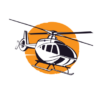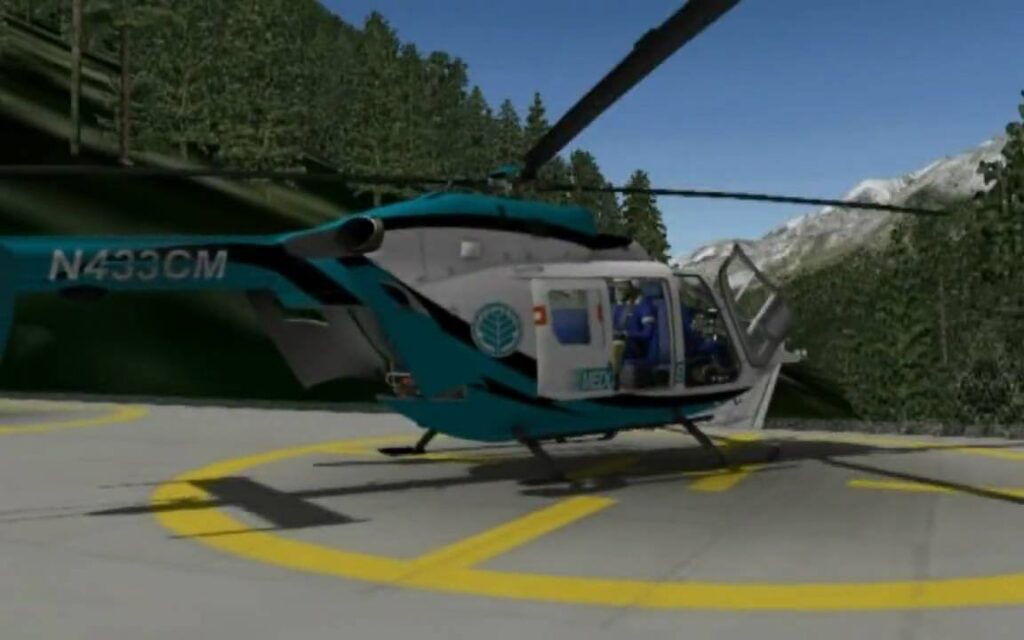Overview of the Kawasaki BK117 Helicopter
The Kawasaki BK117 helicopter is a twin-engine aircraft, a product of a joint development between two prominent manufacturers, Kawasaki Heavy Industries and Airbus Helicopters. Launched in 1979, this versatile and reliable aircraft has been widely used across the globe for various applications, including air medical services, search and rescue missions, corporate transport, and law enforcement.
Design and Performance
The design of the Kawasaki BK117 is one that is centered around efficiency and performance. The helicopter features a spacious cabin, making it suitable for accommodating multiple passengers or carrying large cargo. It is equipped with a four-blade main rotor and a two-blade tail rotor, both of which contribute to its exceptional stability and control. Powered by two turbo-shaft engines, the BK117 is capable of reaching speeds up to 155 knots and has a service ceiling of 20,000 feet.
Advanced Features
The Kawasaki BK117 is not just about raw performance. Its also packed with advanced features that enhance its functionality and safety. The helicopter comes with a fully-digital autopilot system, allowing for smoother and more precise flights. It also includes an advanced navigation system and a collision avoidance system, which add an extra layer of safety for the pilots and passengers.
In terms of comfort, the BK117 doesnt fall short. Its cabin is well-insulated to reduce noise levels, and the seating is designed to provide optimal comfort during long flights. The large sliding doors on either side of the aircraft also make it easy for passengers to get in and out, and for cargo to be loaded and unloaded.
The Kawasaki BK117 helicopter, with its robust design, impressive performance, and advanced features, is indeed a testament to Kawasakis commitment to excellence in aviation.
The Technical Specifications of the Kawasaki BK117
The Kawasaki BK117 is a highly versatile twin-engine helicopter, widely used for various missions including emergency medical services, personnel and cargo transport, and search and rescue operations. Its design is a result of a collaborative effort between Kawasaki Heavy Industries and German company Messerschmitt-Bölkow-Blohm (MBB).
Powerplant and Performance
The BK117 is powered by two Turbomeca Arriel 1E2 turboshaft engines, each capable of producing up to 738 shaft horsepower. This power allows the helicopter to reach a maximum speed of 152 knots, with a cruising speed of 143 knots. It boasts a range of approximately 383 nautical miles and can climb at a rate of 1,675 feet per minute.
Airframe and Capacity
One of the key features of the Kawasaki BK117 is its spacious, unobstructed cabin. It can accommodate up to 10 passengers or be configured for two stretchers with an additional space for medical attendants, making it ideal for air ambulance operations. The helicopter has an external length of 13 meters, a height of 3.85 meters, and a rotor diameter of 11 meters. The BK117 has a maximum takeoff weight of 3,535 kg, providing ample capacity for various missions.
Avionics and Systems
The Kawasaki BK117 is equipped with advanced avionics and systems for enhanced flight capabilities. It features a four-axis autopilot, a dual-duplex four-axis automatic flight control system, and a flight management system that supports IFR operations. Its navigation system includes a GPS, VOR/ILS, and ADF, among other standard equipment. The BK117 also incorporates a health and usage monitoring system (HUMS) for increased safety and efficiency.
Comparing the Kawasaki BK117 with Other Helicopters in its Class
When it comes to versatility and performance, the Kawasaki BK117 stands out in its class. However, its essential to compare this exceptional helicopter with other models in its class to appreciate its unique features fully. Other helicopters in the same category include the Airbus H135, Bell 429, and Leonardo AW109.
Kawasaki BK117 vs. Airbus H135
Both the Kawasaki BK117 and Airbus H135 are known for their excellent performance, but there are noticeable differences. The BK117 has a more powerful engine, giving it a higher maximum takeoff weight compared to the H135. This makes the BK117 more suitable for heavy-duty missions. However, the H135 has a higher cruising speed, making it ideal for quick trips.
Kawasaki BK117 vs. Bell 429
Compared to the Bell 429, the Kawasaki BK117 has a larger cabin space, allowing it to accommodate more passengers comfortably. It also has a higher service ceiling, making it capable of flying at higher altitudes. On the other hand, the Bell 429 offers a smoother ride due to its four-blade rotor system.
Kawasaki BK117 vs. Leonardo AW109
The Kawasaki BK117 and Leonardo AW109 are both widely used for medical services. The BK117 has a wider cabin, allowing for better patient accessibility, while the AW109 is renowned for its speed and range. Despite these differences, both helicopters provide excellent maneuverability and safety features.
Overall, the Kawasaki BK117 offers a unique blend of performance, comfort, and safety, making it a standout in its class.
The Operational History and Uses of the Kawasaki BK117
The Kawasaki BK117 is a twin-engine helicopter, widely acknowledged for its versatility, reliability, and operational history. Jointly developed by Germanys MBB (now Airbus Helicopters) and Japans Kawasaki Heavy Industries, the BK117 made its first flight on June 13, 1979. Its advanced design and exceptional performance have led to its widespread use in multiple sectors around the globe.
Operational History
The Kawasaki BK117 was initially used for transporting cargo and personnel, with its robust build and powerful engines making it a reliable choice for difficult terrains and adverse weather conditions. The BK117 has also seen considerable use in law enforcement and emergency medical services (EMS), due to its ability to land in tight spaces and perform in high-pressure situations. This helicopter has proven itself in a variety of challenging environments, from the freezing temperatures of Antarctica to the scorching deserts of the Middle East. The BK117s operational history spans over four decades, demonstrating its durability and adaptability.
Uses of the Kawasaki BK117
Over the years, the Kawasaki BK117 has found applications in several fields. One of its most notable uses is in the realm of emergency medical services, where its ability to perform in challenging conditions and tight spaces is highly valued. It has also been used for offshore oil and gas operations, where its reliability and performance have proven essential. Additionally, the BK117 has been utilized for search and rescue operations, firefighting, and VIP transportation, showcasing its diverse capabilities. The BK117 continues to be a preferred choice in many sectors, testament to its robust design, reliability, and operational history.
Understanding the Maintenance and Safety Features of the Kawasaki BK117
The Kawasaki BK117 is a twin-engine helicopter, renowned for its robustness and reliability in various operations. When it comes to maintaining this versatile aircraft, there are key aspects to consider. Regular inspections, parts replacement, and systems checks are all integral parts of the Kawasaki BK117 maintenance process. This ensures that the helicopter remains in peak operating condition, minimizing the risk of malfunctions or accidents during flights.
Regular Inspections and Parts Replacement
Like all aircraft, the Kawasaki BK117 requires regular inspections to detect any signs of wear and tear or potential problems. This includes checking the engines, rotor systems, and avionics systems. Regular inspections ensure that any issues are detected early and rectified promptly, reducing the risk of more significant problems down the line. In addition, parts replacement is an essential aspect of maintenance. Parts such as the blades, engine components, and electronic systems may need to be replaced over time due to wear and tear or to maintain optimal performance.
Safety Features of the Kawasaki BK117
The Kawasaki BK117 is equipped with a range of safety features designed to protect the crew and passengers. The helicopters dual engine design provides a level of redundancy, ensuring that the helicopter can still operate even if one engine fails. Furthermore, the BK117 is equipped with advanced avionics systems, providing pilots with crucial flight information and enhancing situational awareness. It also has a crash-resistant fuel system to minimize the risk of fire in the event of an accident.
Training is another critical aspect of safety. Kawasaki provides comprehensive training for pilots and maintenance personnel, ensuring they are well-equipped to operate and maintain the BK117 safely and efficiently. This training includes both theoretical knowledge and practical skills, providing a holistic understanding of the helicopters operation and maintenance requirements.



